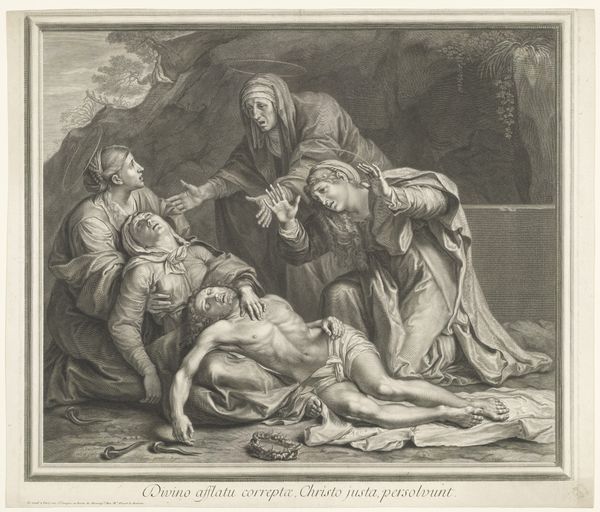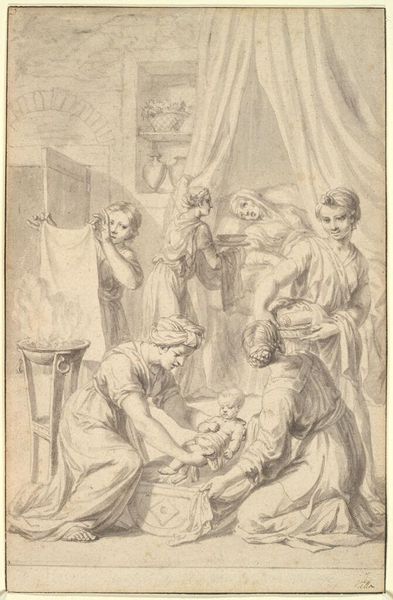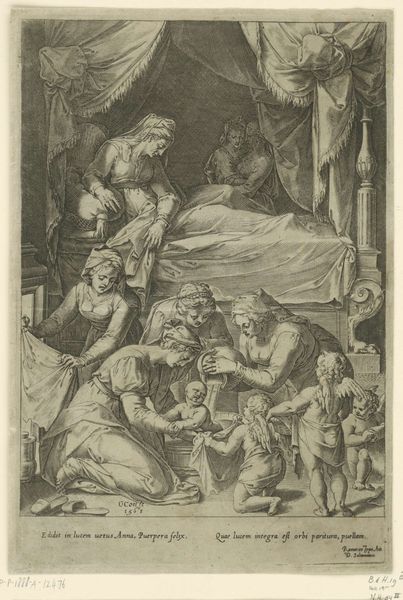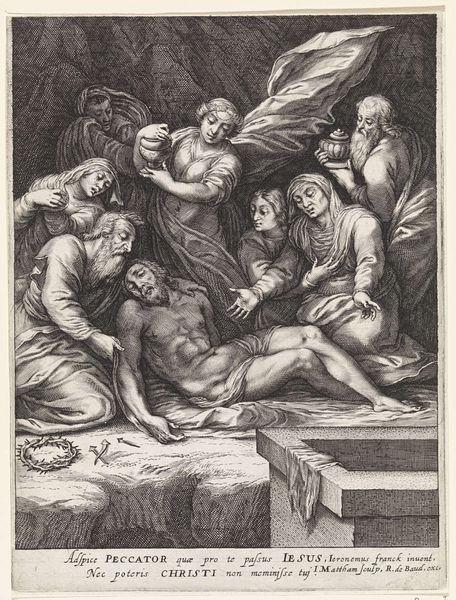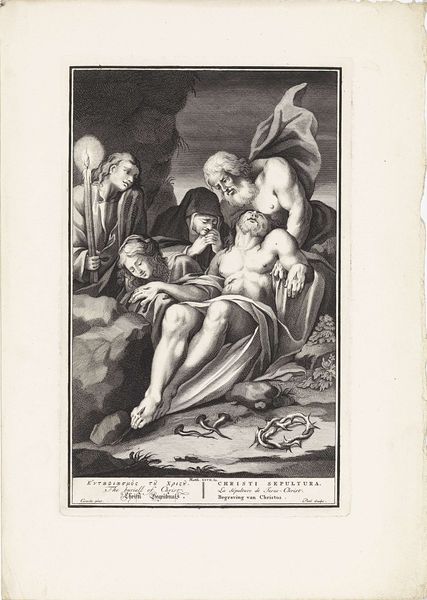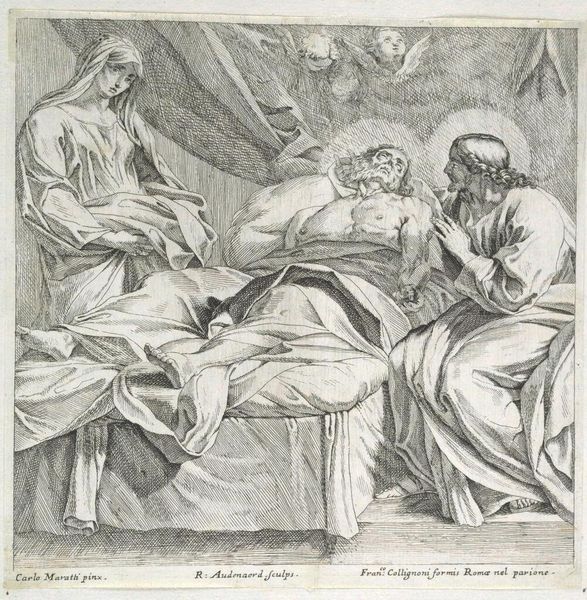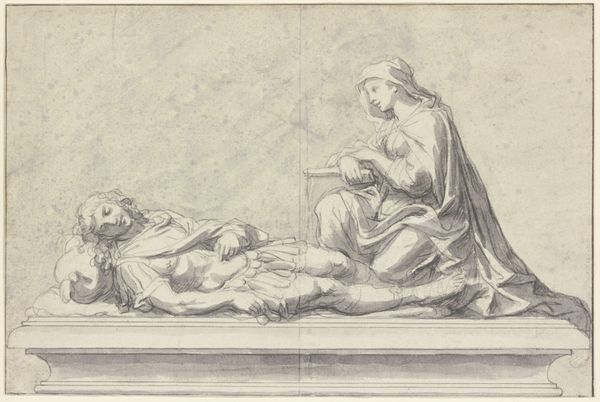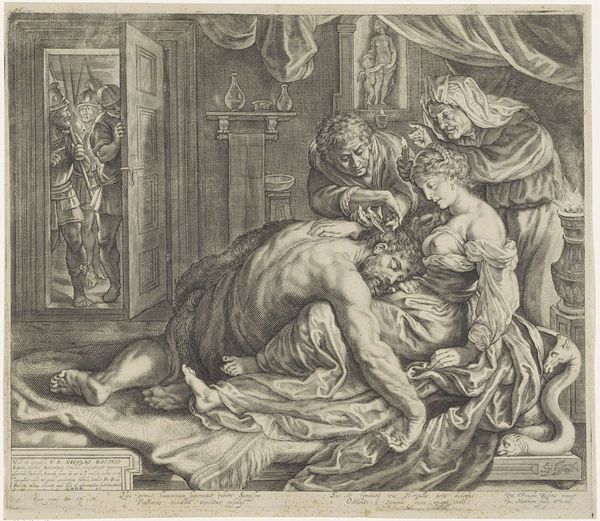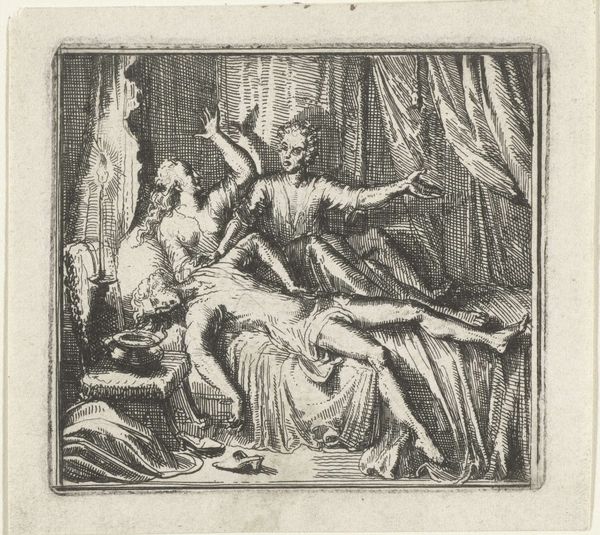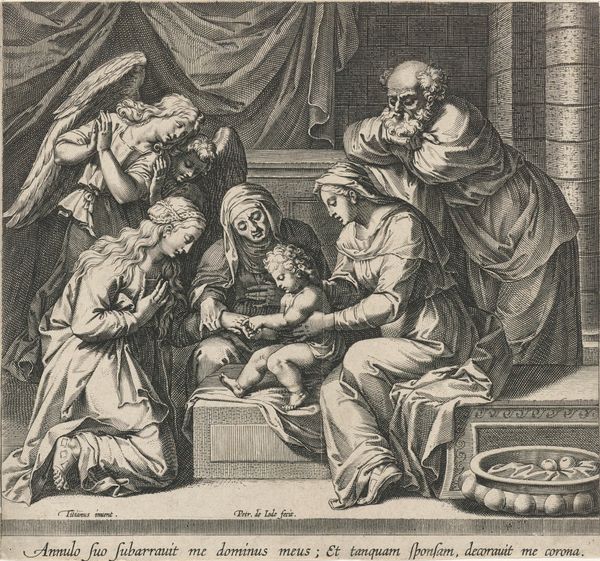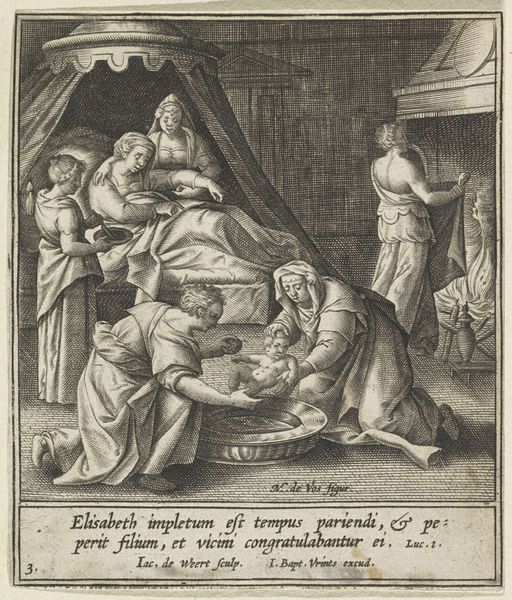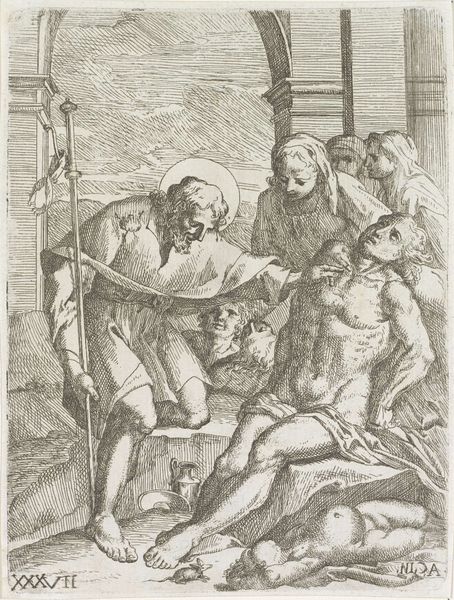
print, engraving
#
narrative-art
#
baroque
# print
#
charcoal drawing
#
figuration
#
history-painting
#
engraving
Dimensions: height 170 mm, width 215 mm
Copyright: Rijks Museum: Open Domain
Editor: So, this engraving, "Bewening van Christus," or "The Lamentation of Christ," made by Jacob Matham in 1607… it's overwhelmingly mournful, obviously. The way Christ's body is positioned, almost draped, and the figures around him consumed by grief… what significance do you see in Matham’s choice of imagery here? Curator: The "Lamentation" is such a potent symbol. Consider the gestures: the Virgin Mary tenderly holding Christ, Mary Magdalene’s sorrowful embrace. These are deeply rooted archetypes of maternal loss and empathetic suffering. Editor: Archetypes, interesting. So, these images resonate beyond the purely religious narrative? Curator: Absolutely. The pieta, or lamentation, transcends religious doctrine. It speaks to universal experiences: loss, grief, the solace found in community. Think about the crown of thorns at the base, the basin nearby—these objects are more than mere props. Editor: Right, they’re not just descriptive elements, are they? The crown signifies sacrifice… Curator: Precisely! And the basin? Purity, perhaps, or the act of cleansing. What stories do these details whisper to you about human frailty and resilience? They highlight human relationships—sorrow and care giving. These enduring stories and symbols ripple through art history, retaining power as cultural memory evolves. What do you take away from those background figures? Editor: Well, I initially didn’t pay too much attention to them. But now that you point it out…it's fascinating to notice that despite their small rendering, Matham makes it clear they carry lances, so death hasn’t really left the scene. It's all pretty devastating. Thanks for this insightful analysis. Curator: Indeed. Observing the layering of those universal themes shows the image becomes a mirror to our own shared humanity and grief, still resonant after all this time.
Comments
No comments
Be the first to comment and join the conversation on the ultimate creative platform.
